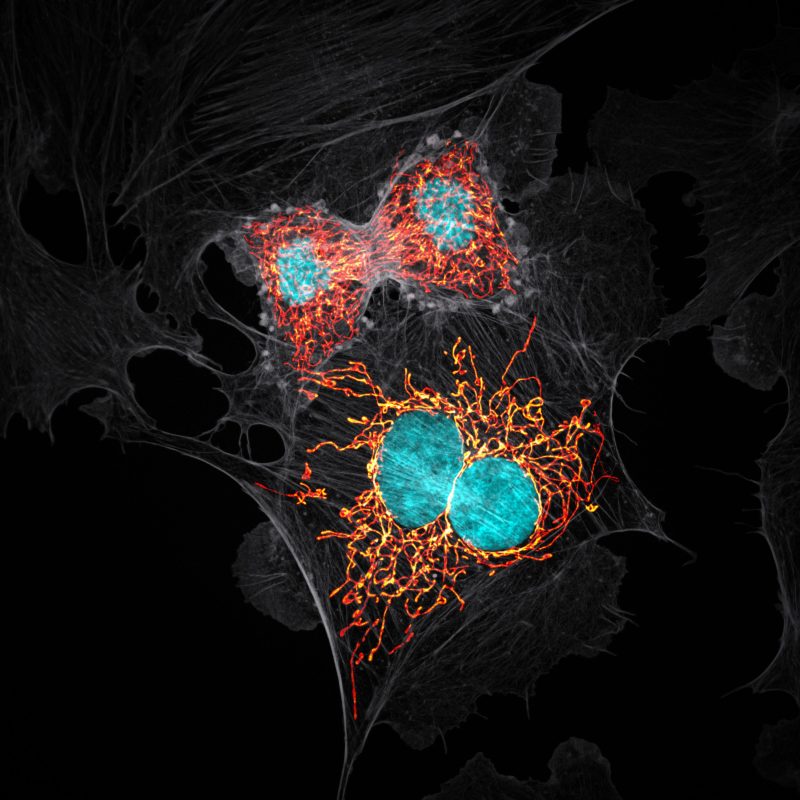2019 Photomicrography Competition


10th Place
BPAE cells in telophase stage of mitosis
Jason Kirk
- Affiliation
- Baylor College of Medicine
Optical Imaging & Vital Microscopy Core
Houston, Texas, USA
- Technique
Confocal with Enhanced Resolution
- Magnifaction
- 63x (Objective Lens Magnification)
In Their Own Words
A Q&A with Nikon Small World winner Jason Kirk.
What is the subject matter of your winning image and why did you choose this image?
Bovine Pulmonary Artery Endothelial cells with mitochondria labeled with Mitotracker (glow scale), F-Actin (grey) and DAPI (magenta) for DNA. It is one of the strongest compositions I have made with this cell line, which is a wonderful benchmark tool for microscopists. These cells are fascinating to image due to the endless variations in morphology and number of markers that can be used. I wanted to illustrate the idea that mitochondria are the power plants of the cell. Fire is synonymous with energy and the contrast of the monochrome ‘ashes’ of the cytoskeleton against the fiery mitochondria illustrates this nicely, I believe.
What are the special techniques and/or challenges faced in creating this photomicrograph?
This was a time-consuming image to get balanced correctly. Each of the three channels had to be imaged separately as well as processed independently to produce the final composition. To get everything in focus, a maximum intensity projection was done on each Z stack and the image was pseudo-colored in postproduction.
What is your primary line of work?
I direct a core facility for the Baylor College of Medicine that focuses on fluorescence imaging of large intact tissue models using 3-D optical sectioning tools.
How long have you been taking photographs through a microscope? What first sparked your interest in photomicrography?
More than 20 years. I had an undergraduate advisor who was passionate about imaging flatworms. He introduced me to electron and fluorescence microscopy. This was in the late 90s when digital imaging was just starting to be used but was very expensive. The first time I took a picture from a computer I was hooked.
Do you tend to focus your microscopy toward a specific subject matter or theme? If so, why?
I am a bit of a generalist. Our researchers are interested in a vast array of model systems and so, as a core facility director, I have broad access to many different subjects. Fluorescence has always interested me because, while it is a tool targeted at the molecular level, we can observe the labeling over large areas of intact tissue, which makes the imaging exciting and challenging.
Why did you enter the Nikon Small World Photomicrography competition? What do you think of the competition?
NSW is a fantastic showcase for a diverse community of photographers made up of scientists, hobbyists and artists, which blends traditional photography and science in a way that is not often seen in mainstream media. I think this competition reminds people that the world is so much bigger than what they can see with their eyes and I wanted to be a part of that.
 Share
Share Tweet
Tweet Pin-It
Pin-It